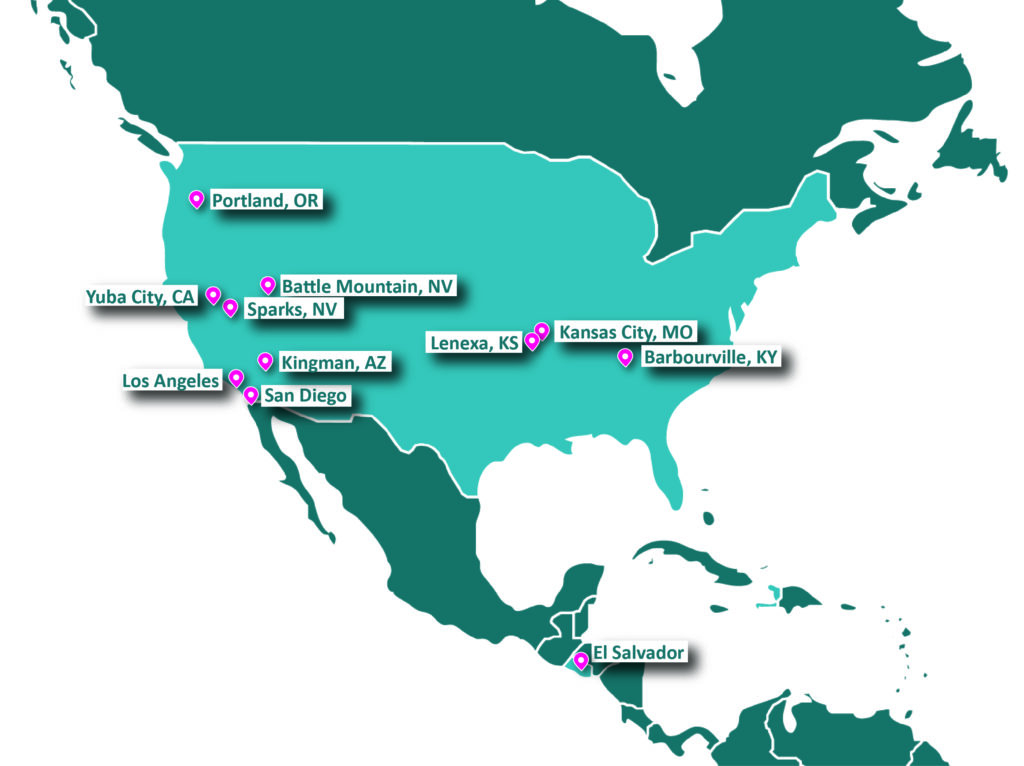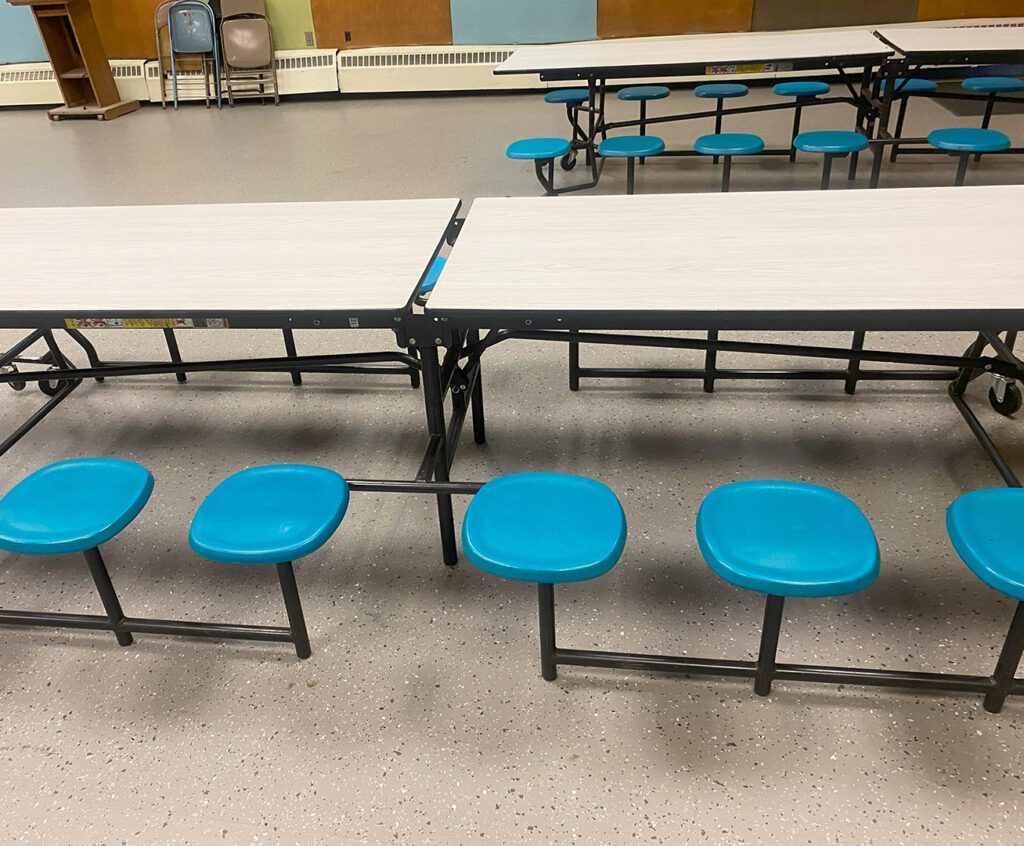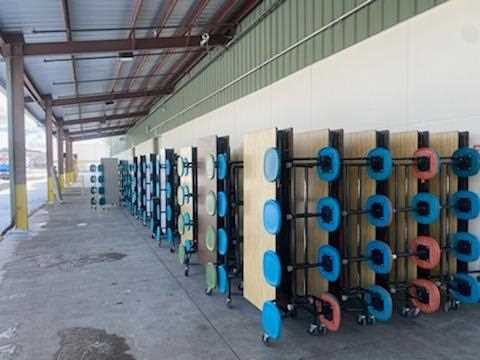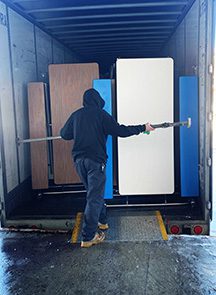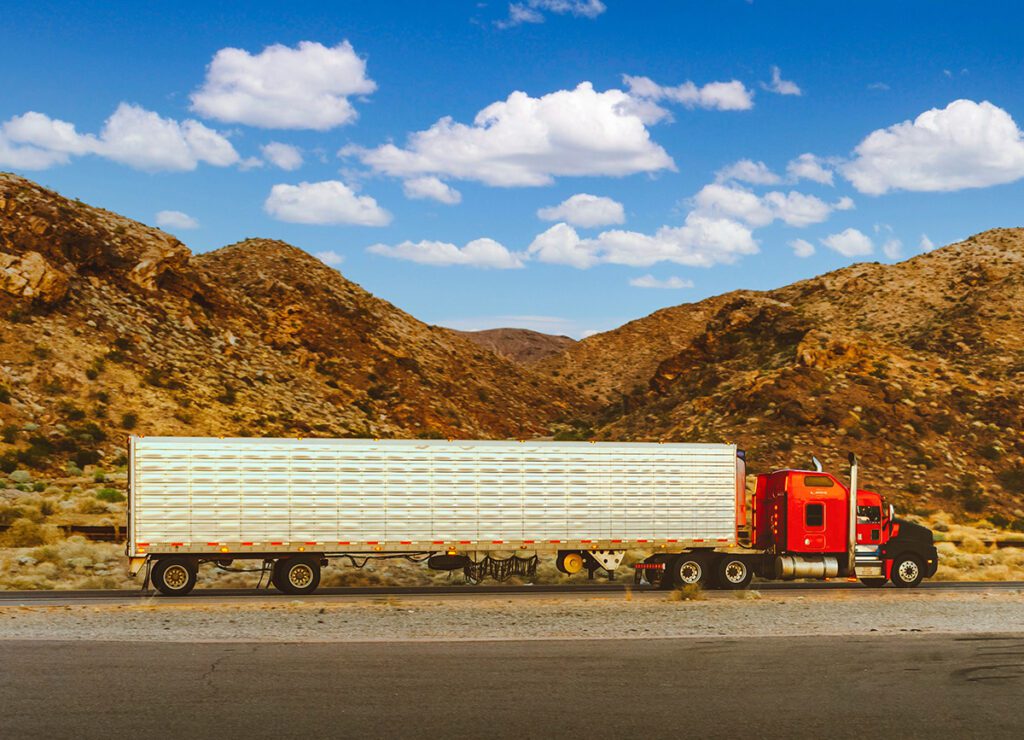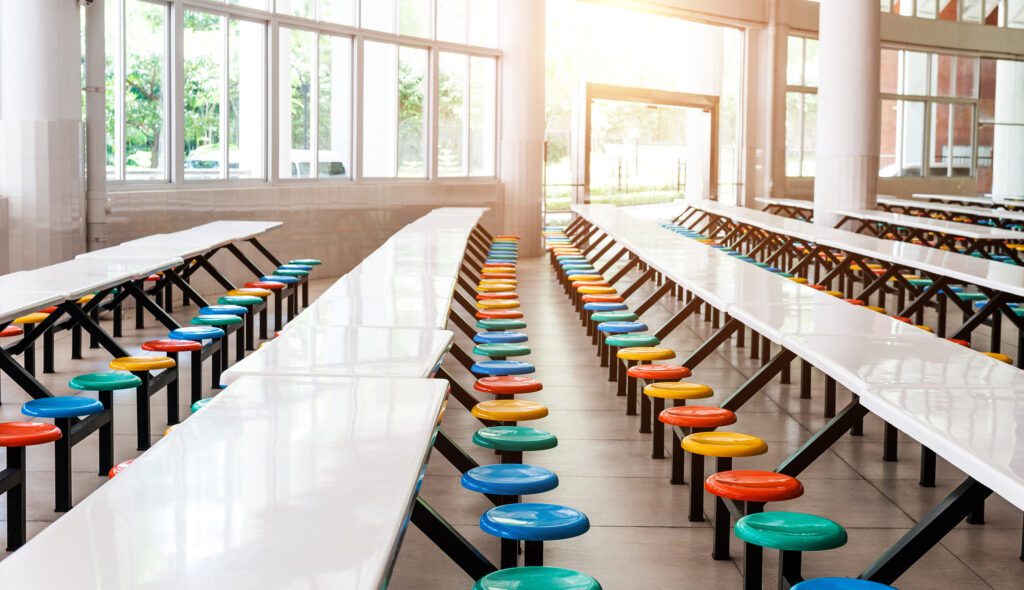A cafeteria is commonly at the heart of a school’s campus. Not only is it a student hub for eating, but a cafeteria is also a multi-use facility for venues ranging from study centers to dance halls. Such a diverse facility requires furniture that can be easily moved and reconfigured.
A major school district in Nevada decided to redesign their cafeterias in 2023. This involved replacing 930 cafeteria tables over a six-month period. In line with their social responsibility initiatives, the district sought a sustainable solution for these decommissioned tables. Their furniture vendor reached out to Furniture Reuse Solutions for services that place the surplus tables with charities and nonprofit organizations.
FRS knew they struck gold with this request. Of all the furniture in a K-12 school, cafeteria tables are by far the most popular items with charities. All tables are wheeled and foldable, with 660 bench style and 270 with attached seats. The tables were welcome at under-resourced schools in California, Kentucky, Nevada, and El Salvador. Other shipments went to charitable organizations operating thrift stores to raise funds for their humanitarian missions, including affordable housing and addiction recovery.
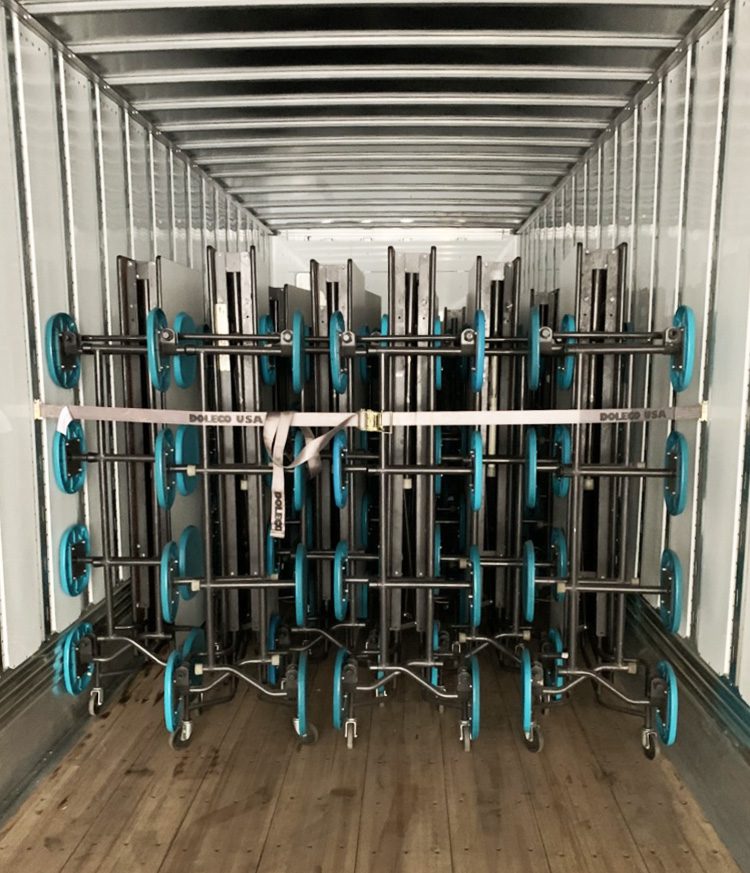
Results

930 Large Items Repurposed
The district generated 930 cafeteria tables with folding seats/benches for reuse. These items filled 17 53′ tractor trailers and one 40′ high-cube shipping container.

161 Tons diverted from Landfill
By diverting from the landfill, the district realized a greenhouse gas offset equivalent to conserving 55,200 gallons of gasoline (490 metric tons CO2 equivalent).

Cost Savings
Reuse is less expensive than disposal and recycling. This inventory would have required a minimum of 65 30-yard roll-off waste containers for disposal.

Social Responsibility
Two US school districts each received a shipment. An international charity sponsored one shipment to El Salvador. Another shipment went to a tribal council in Nevada. Fourteen shipments were sent to six domestic charities and nonprofits with humanitarian missions.
Destinations
